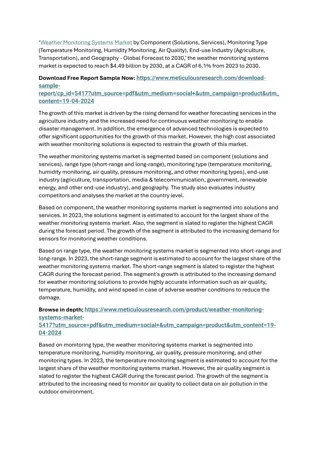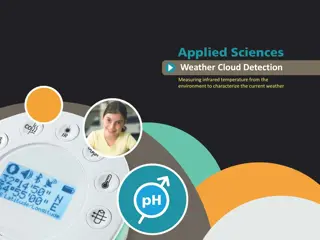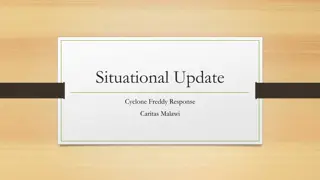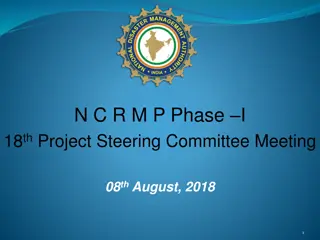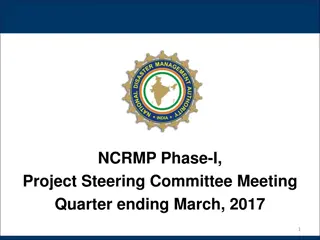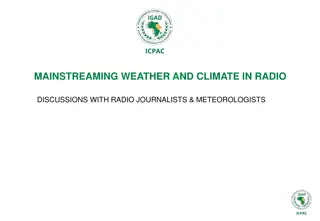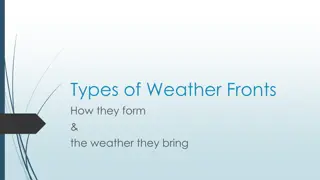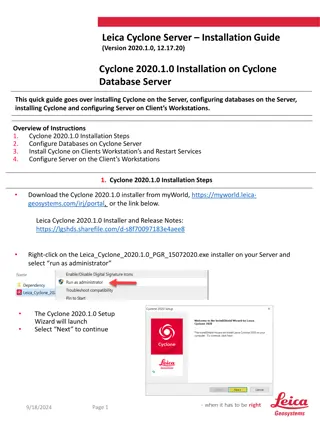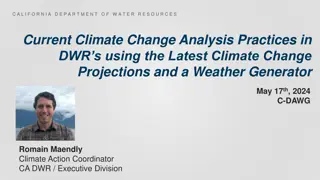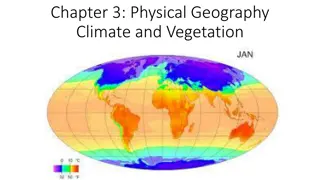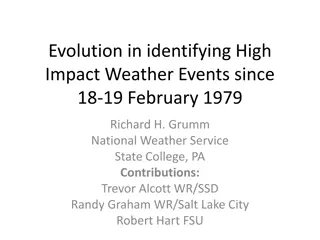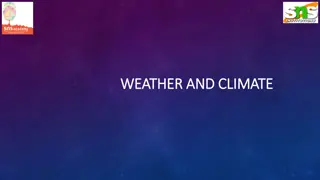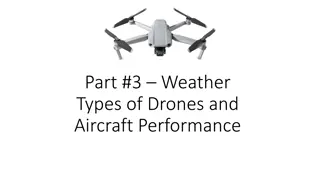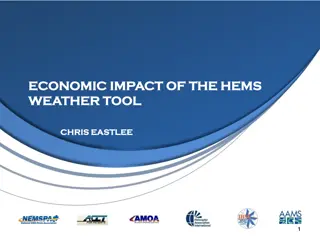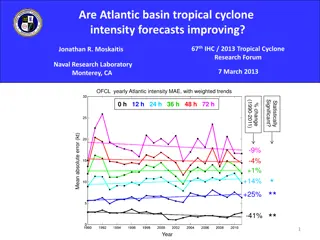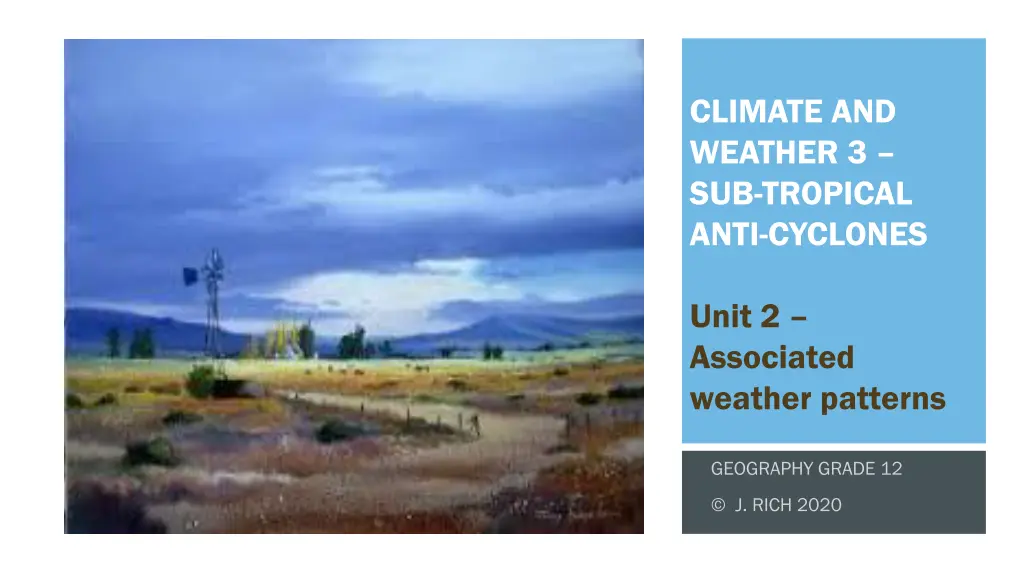
Weather Patterns and Effects: Sub-Tropical Anti-Cyclones
Explore the impact of sub-tropical anti-cyclones on climate and weather patterns, including the characteristics of high-pressure cells, intense cold snaps in winter, the Cape Doctor phenomenon, and moisture fronts. Learn about the Kalahari high-pressure cell and the contrasting weather phenomena on the dry west coast and wet east coast.
Download Presentation

Please find below an Image/Link to download the presentation.
The content on the website is provided AS IS for your information and personal use only. It may not be sold, licensed, or shared on other websites without obtaining consent from the author. If you encounter any issues during the download, it is possible that the publisher has removed the file from their server.
You are allowed to download the files provided on this website for personal or commercial use, subject to the condition that they are used lawfully. All files are the property of their respective owners.
The content on the website is provided AS IS for your information and personal use only. It may not be sold, licensed, or shared on other websites without obtaining consent from the author.
E N D
Presentation Transcript
CLIMATE AND WEATHER 3 SUB-TROPICAL ANTI-CYCLONES Unit 2 Associated weather patterns
1 minute REVIEW WHAT HAVE YOU ALREADY LEARNED? Anti-cyclonic circulation seen in three high pressure cells. In high pressure cells there is stable air that does not rise hence less chance of rain High pressure cells are associated with a temperature inversion
OVERVIEW WHAT YOU WILL LEARN After you have finished this unit you should be able to: Explain Explain how the high pressure cells affect climate Explain Explain what causes intense cold snaps in winter Describe Describe the nature and origins of the Cape Doctor Explain Explain the nature and effects of moisture fronts and line thunderstorms Describe Describe the causes and effects of coastal low pressure systems Outline Outline the causes and effects of berg winds
KALAHARI HIGH PRESSURE CELL In winter the subsiding air sinks lower because the ground is cooler The lower limit of the temperature inversion is below the escarpment Moist air cannot rise over the escarpment so the interior has warm days, cloudless skies, cold nights and little rain
KALAHARI HIGH PRESSURE CELL (CONTD.) In summer the ground is warmer so subsiding air does not fall as far Lower level of temperature inversion is above the escarpment. Moist air from the coast can move over the escarpment and bring rain
DRY WEST COAST / WET EAST COAST EAST COAST EAST COAST WEST COAST WEST COAST Onshore winds from SAAC cross cold Benguela current => little moisture Onshore winds from SIAC cross the warm Mozambique current => evaporation and moisture SAAC stays close to shore => little chance to pick up moisture In summer SIAC moves further east away from shore => more chance to pick up moisture
INTENSE COLD SNAPS IN WINTER In winter mid-latitude cyclones move further north The SAAC can ridge in behind the cold front intensifying it Causes sudden severe cold weather and even possible snow inland
CAPE DOCTOR SOUTH EASTER IN SUMMER In summer SAAC moves further south When it ridges in to the east it causes a strong south-easterly wind to blow over the southern Cape Peninsula As the wind rises over Table mountain it cools and the moisture condenses to form the cloud cover called the Tablecloth The south easter disperses smog and dust from Cape Town and cleans the air so called the Cape Doctor
MOISTURE FRONT Moisture front separates air masses of different humidity. Develop over the interior in summer Kalahari HP cell lifts and warm moist air from the SIAC flows inland from the north east. Cool dry air from the SAAC blows inland from south west When they converge they from a moisture front across SA from north west to south east
LINE THUNDERSTORMS At the moisture front the unstable warm air rises to a great height It cools adiabatically and the moisture condenses Tall cumulonimbus clouds form Thunderstorms and possible hailstorms occur. Line thunderstorms are not caused by surface heating so they can even occur at night The rising air causes a trough of low pressure
COASTAL LOWS Not associated with fronts A small low pressure system along the coast moving west to east Clockwise wind circulation causes moist onshore winds behind the low Offshore winds ahead of the low cause warm dry conditions
BERG WINDS Hot, dry winds from plateau to the coast High inland pressure and low coastal pressure because of approaching cold front or a coastal low cause pressure gradient. Descending air warms adiabatically at rate of 1degC /100m rising by around 10deg or more When cold front arrives the air pressure inland drops and the berg wind ceases. Berg winds are short lived and can occur by day or night They occur most often during winter months They are unpleasant and often associated with veld fires
CHECKLIST OF WHAT I KNOW I can explain I can explain I m confident I m confident Not confident ; Not confident ; recheck recheck How the Kalahari HP system causes SA s summer rainfall climate How anti-cyclone systems causes differences in annual rainfall on SAs east and west coasts What causes intense cold snaps over the interior in winter What the Cape Doctor is, what causes it, and how it affects weather in the Cape Peninsula What a moisture front is and how it forms How moisture fronts give rise to line thunderstorms
CHECKLIST OF WHAT I KNOW (CONTD.) I can explain I can explain I m I m confident confident Not confident ; Not confident ; recheck recheck What weather conditions to expect around a coastal low How weather services can identify risk areas for runaway veld fires What causes berg winds and why they don t last so long How a weather service might predict the possibility of hail storms What caused the severe heat wave in East London that resulted in a record high temperature of 43,9 deg C on 13 March 2021.


